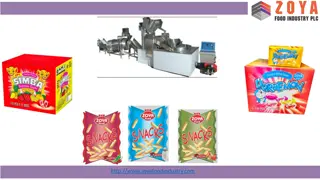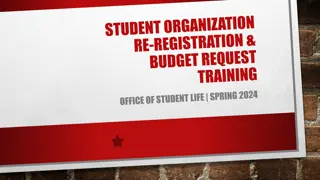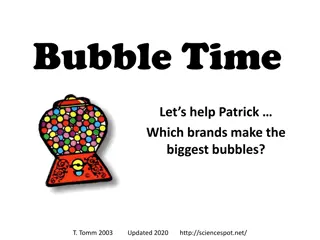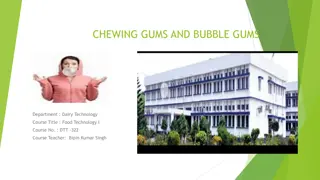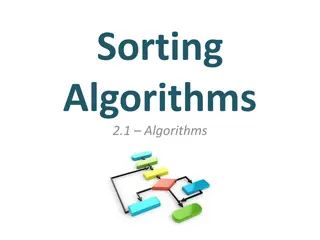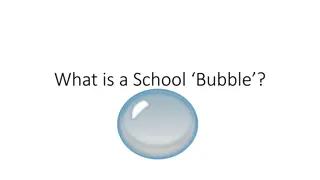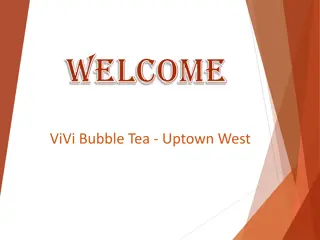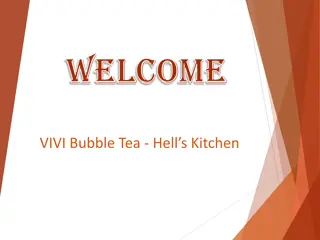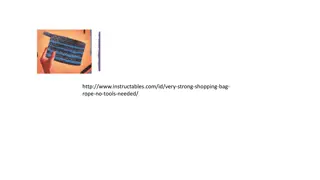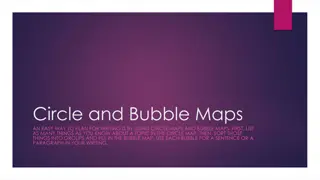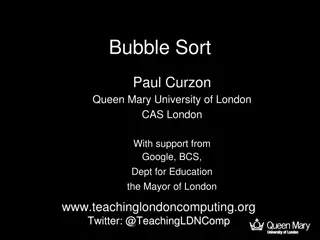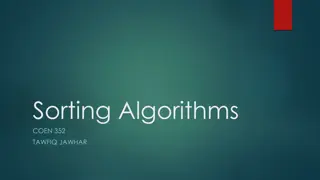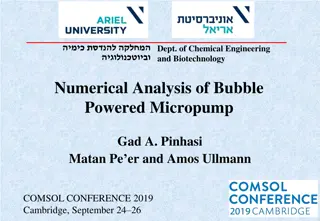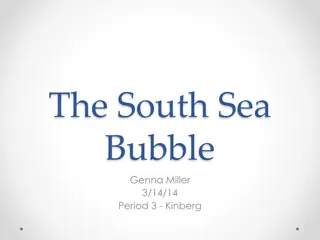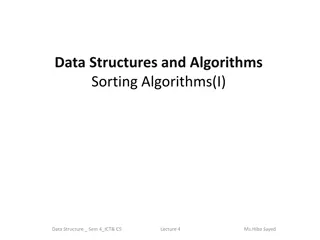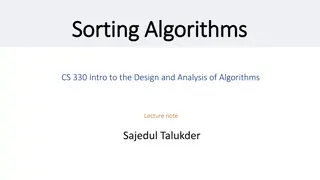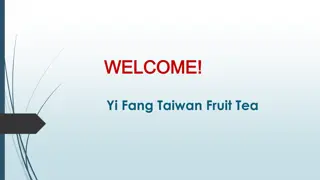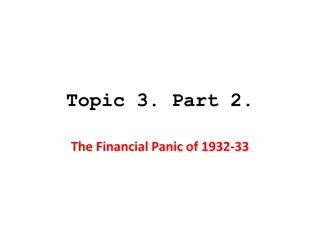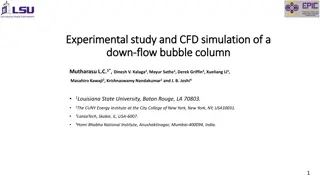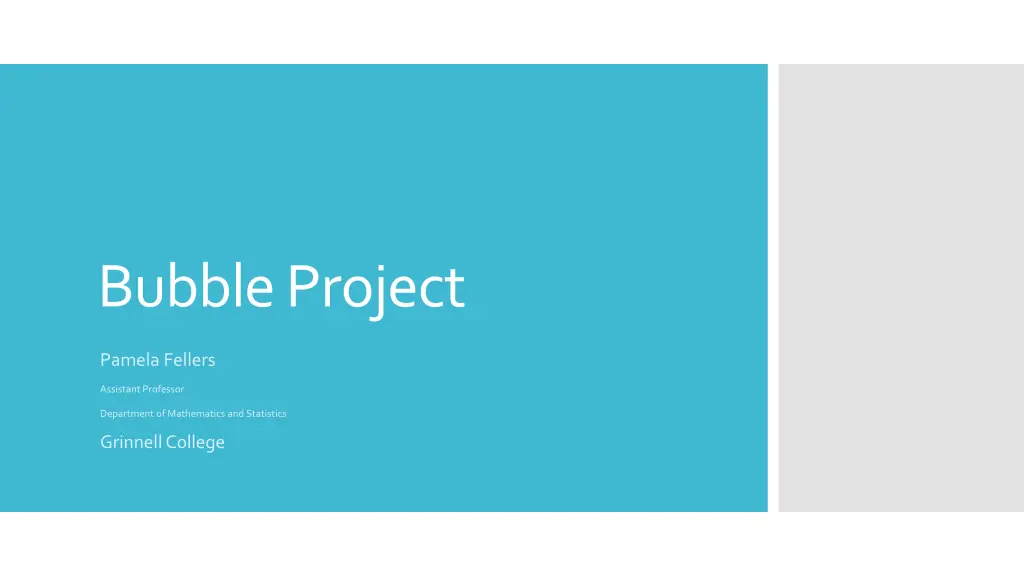
Bubble Project Summary & Research Proposals
"Explore the Bubble Project by Assistant Professor Pamela Fellers at Grinnell College, covering motivation, project overview, research proposals, data collection plans, and statistical analysis. Engage in a fun, low-cost, short-term statistical experiment involving bubble solutions."
Download Presentation

Please find below an Image/Link to download the presentation.
The content on the website is provided AS IS for your information and personal use only. It may not be sold, licensed, or shared on other websites without obtaining consent from the author. If you encounter any issues during the download, it is possible that the publisher has removed the file from their server.
You are allowed to download the files provided on this website for personal or commercial use, subject to the condition that they are used lawfully. All files are the property of their respective owners.
The content on the website is provided AS IS for your information and personal use only. It may not be sold, licensed, or shared on other websites without obtaining consent from the author.
E N D
Presentation Transcript
Bubble Project Pamela Fellers Assistant Professor Department of Mathematics and Statistics Grinnell College
Motivation for project Overview of project Two versions Fall 2015 Spring 2016 Outline Summary of my experiences
Beginning content is generally a review for some (most?) students Data collection methods information might be the exception Final projects tend to occur during the second half of the semester Motivation The Bubble Project Introduces a variety of statistical thinking questions into the beginning material Gives extra exposure to data collection methods Reference for final project
Bubbles are fun Low-cost Short-term (4 weeks) Random group assignments Motivation
Randomly assigned teams of 3-5 students All teams were given the following research prompt: What is the best bubble solution? Teams were also given one of the following two additional guidelines/restrictions You will have access to three containers each of two brands of bubble solution. You will have access to the supplies needed to make bubble solutions based on the recipe below. As a group you will need to choose either the dishwashing liquid or the sugar ingredient to modify creating different version(s) of the recipe. Once recipe you will use to make bubble solution will be the given recipe and then you will need to choose one or two different amounts of the ingredient your group wishes to modify to make additional bubble solution(s). 1 cup of water cup dishwashing liquid 2 teaspoons sugar Overview of Project
Research Proposals 1 page maximum Introduction to the research question Clearly defined research question Motivation or rationale for project Identification of response and explanatory variables Include explanation and reasoning Research Proposals Defining a research question that can be answered through collected data Variables response and explanatory, categorical and quantitative, data organization Data Collection Plans Reproducible research (from written study design perspective) Study Design controlled variables or processes, randomization, treatments, factors, levels Overview of Project Data Collection Plans 3 page maximum Specifically identify how data will be collected Outline process including set-up Incorporate data collection and study design components Decisions to be made consider from a statistical perspective What do we do about the bubble wands? How should we mix the solutions? Does it matter how we blow the bubbles? Proper use of statistical terminology
Instructor Guided Steps Research Proposals (Week 1) Refine general research question Clearly defined variables Data Collection Plans (Week 2) Elements of a study Identifying controlled variables Data collection procedures Overview of Project Discussed or referenced project each class Built in occasional 10-15 min. work times
Weeks 1 & 2 Research proposal and data collection plans During add/drop deadline flexible groups Some loved collecting the data, others thought it was unnecessary Week 3 Fall 2015 Timeline Teams collected their data outside of class Presentations A little repetitive Many errors/flaws Incorporate discussion into future classes Week 4 Organize and summarize data In-class presentation (8 min.)
Still required some flexibility in groups Spent a full class prior to peer review Given two instructor created sample drafts Brought materials to class Small group discussion and peer review of the samples Weeks 1 & 2 Drafted research proposal and data collection plan Week 3 Spring 2016 Timeline Peer review of drafted proposals and data collection plans Final research proposals and data collection plans were higher quality than in the Fall 2016 Practicality of data collection Week 4 Final research proposal and data collection plans due
Enjoyed using bubbles, potentially other topics Timeline and add/drop Collect data? Use one or two projects as a class lab? Random groups is a must (for me) Students appreciated discussions in class about project Alterative recipe Glycerin or corn syrup Summary of My Experience Peer review was beneficial Alternative variables Resting time, type of water, wand, method of blowing the bubble Final project ideas, research questions, and overall projects improved No more I ve never done this.
Duration Of all bubbles from a single blow Of the first bubble from leaving wand to popping Reason for popping Mid-air, floor, on own after contact Number of bubbles produced Size Students were creative! Record with video equipment or iPad Graph paper Measure mid-air Ruler, 3 size cards Measure on a surface Pop on colored paper for outline Blew bubble on surface and measured outline Film length Seconds until fan breaks bubble film Effort Noted whether solution was left over on wand and how many attempts were needed to form bubbles
Thank You! Taylor, L., A New Approach to Projects in an Introductory Design and Analysis of Experiments Course , USCOTS 2015 Poster Presentation, May 2015. Steiner, S. H., Hamada, M., Giddings White, B. J., Kutsyy, V., Mosesova, S., and Salloum, G. A Bubble Mixture Experiment Project for Use in an Advanced Design of Experiments Class Journal of Statistics Education, 15(1), 2007) Questions/Comments?


